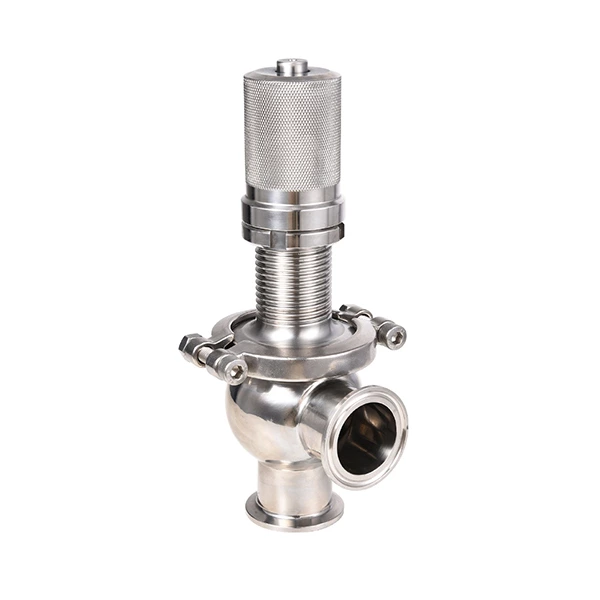Sanitary Stainless Steel Pressure Relief Safety Valve
The sanitary safety valve is a sanitary stainless steel valve. Its safety design enables it to protect equipment, so it is installed in the discharge pressure circuit to provide safety protection for pipelines, pumps, devices, storage tanks, etc. It is widely used in food, beverage, dairy, pharmaceutical, beer and other industries.
How it works
The sanitary safety valve is calibrated to a specific pressure by adjusting the compression nut of the spring. The calibration pressure is a pressure value set to avoid equipment damage. Under normal working pressure, the valve is closed; when the system pressure exceeds the calibration pressure, the valve opens. The pressure in the pipeline system is released, thereby protecting the pipeline and equipment.
A pneumatic opening device is added to facilitate CIP cleaning of the safety valve and its pipeline.
The safety valve is a special valve that has been strictly calibrated before leaving the factory. However, in order to make the valve more suitable for actual operating conditions, the valve should be calibrated on site if conditions permit.
Technical Parameters
| Metal material | Parts in contact with the product | 304L/316L(1.4307/1.4404) |
| Parts not in contact with the product | 304(1.4301) | |
| Sealing material | Standard | EPDM |
| Optional | SILICONE,PTFE,FPM,NBR | |
| Imported sealing materials are used, all sealing materials comply with FDA/177.2600 | ||
| temperature | Continuous operating temperature | -20~+135℃(EPDM) |
| Sterilization temperature | 150℃(max20min) | |
| pressure | Calibration pressure | 0-3bar/0-6bar/0-10bar (depending on spring action) |
| Control gas source pressure | 5~8bar | |
| Surface treatment | Internal surface treatment | Ra≤0.8μm |
| External surface treatment | Shot peening | |
| connect | Connection Standards | Welding end: DIN/11850/Series 2 |
| Welding end: Inch pipe diameter standard | ||
| Connection method: welding, thread, quick-install, flange, etc. | ||
Installation method of sanitary quick-install valve
1. It is required to remove the protective covers on both sides of the flange end, and then clean and clean it after the valve body of the sanitary ball valve is completely opened.
2. Before installation, be sure to carry out a complete machine test according to the specified signal, and only after it meets the standards can it be installed online.
3. When starting to connect the pipes, be sure to clean the remaining residue in the pipes first.
4. During the installation period, do not use the actuator part of the ball valve as a lifting point to prevent damage to the actuator and accessories.
5. The sanitary quick-install valve should be installed in the vertical or parallel direction of the pipeline.
6. The pipeline near the installation point of the sanitary quick-install valve cannot sag or be subjected to external forces. We can use pipe brackets or supports to deal with pipeline deviations.
7. After connecting to the pipeline, the flange can be cross-tightened with the specified torque while connecting the bolts.



